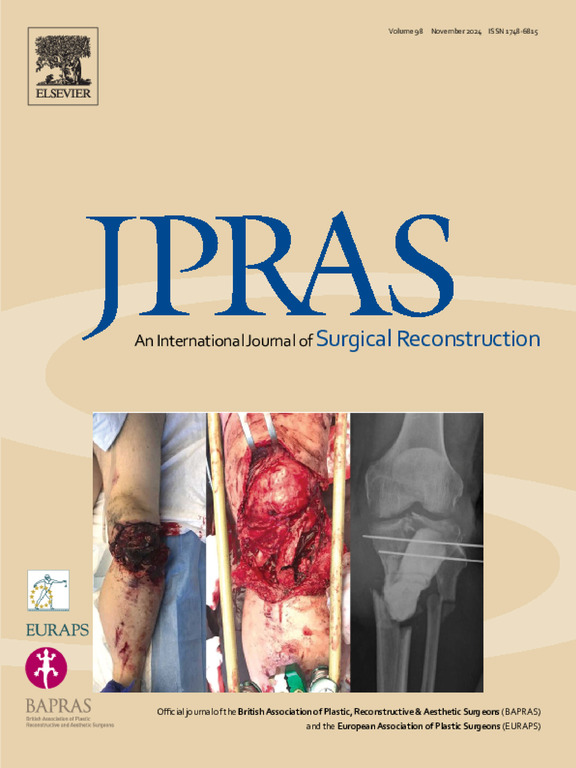减少上眼睑成形术后并发症的个性化术前设计
IF 2
3区 医学
Q2 SURGERY
Journal of Plastic Reconstructive and Aesthetic Surgery
Pub Date : 2025-01-01
DOI:10.1016/j.bjps.2024.08.053
引用次数: 0
摘要
上眼睑眼睑整形术是亚洲人常见的整容手术,可能与眼部解剖特点有关,并伴有多种并发症。2018年1月至2019年12月期间,整形与修复外科共进行了364例上睑眼睑整形手术。手术后并发症及相关眼睑类型分为:上眼睑折痕过高(折痕过高)、上眼睑折痕过低(折痕过低)、上眼睑内侧折痕过高(内侧折痕过高)、上眼睑臃肿(臃肿折痕)、上眼睑折痕不对称(不对称折痕)。分析了上眼睑解剖特征与并发症之间的相关性。根据解剖学特征,术前将寻求上眼睑眼睑整形术的患者分为五种类型,并对2020年1月至2020年12月期间新实施的117例眼睑整形术采用了修改后的手术策略。五位资深整形外科医生对以往(2018-2019年)和修改后(2020-2021年)的眼睑整形手术的术前和术后照片进行了评估,并根据特定标准进行了评分。与之前的手术相比,修改后组的术后评分明显提高(P≤0.01)。根据眼睑解剖特点进行术前分类并进行手术修改,可以减少双眼皮成形术常见的五种并发症的发生。四本文章由计算机程序翻译,如有差异,请以英文原文为准。
Personalized preoperative design for reducing complications after upper blepharoplasty
Background
Upper eyelid blepharoplasty is a common cosmetic surgery among Asians and is associated with several complications that are possibly related to the anatomical characteristics of the eyes.
Methods
A total of 364 upper eyelid blepharoplasties were performed at the Department of Plastic and Reconstructive Surgery between January 2018 and December 2019. The postsurgery complications and related eyelid types were classified as follows: upper eyelid crease too high (too high crease), upper eyelid crease too low (too low crease), medial upper eyelid crease too high (too high medial crease), bloated upper eyelid (bloated crease), and upper eyelid crease asymmetry (asymmetric crease). The correlation between the anatomical characteristics of the upper eyelid and complications was analyzed. Patients seeking upper eyelid blepharoplasty were preoperatively categorized into five types according to their anatomical characteristics, and modified surgical strategies were applied to 117 new blepharoplasties performed between January 2020 and December 2020. Five senior plastic surgeons evaluated the pre- and postoperative photographs of the previous (2018–2019) and modified (2020–2021) blepharoplasties and scored the results on the basis of specific criteria.
Results
The postoperative scores in the modified group increased significantly after the modifications compared to that of the previous surgeries (p ≤ 0.01).
Conclusion
Preoperative classification based on the anatomical characteristics of the eyelid and surgical modifications can reduce the occurrence of the five common complications of double eyelid blepharoplasty.
Level of evidence
IV
求助全文
通过发布文献求助,成功后即可免费获取论文全文。
去求助
来源期刊
CiteScore
3.10
自引率
11.10%
发文量
578
审稿时长
3.5 months
期刊介绍:
JPRAS An International Journal of Surgical Reconstruction is one of the world''s leading international journals, covering all the reconstructive and aesthetic aspects of plastic surgery.
The journal presents the latest surgical procedures with audit and outcome studies of new and established techniques in plastic surgery including: cleft lip and palate and other heads and neck surgery, hand surgery, lower limb trauma, burns, skin cancer, breast surgery and aesthetic surgery.

 求助内容:
求助内容: 应助结果提醒方式:
应助结果提醒方式:


